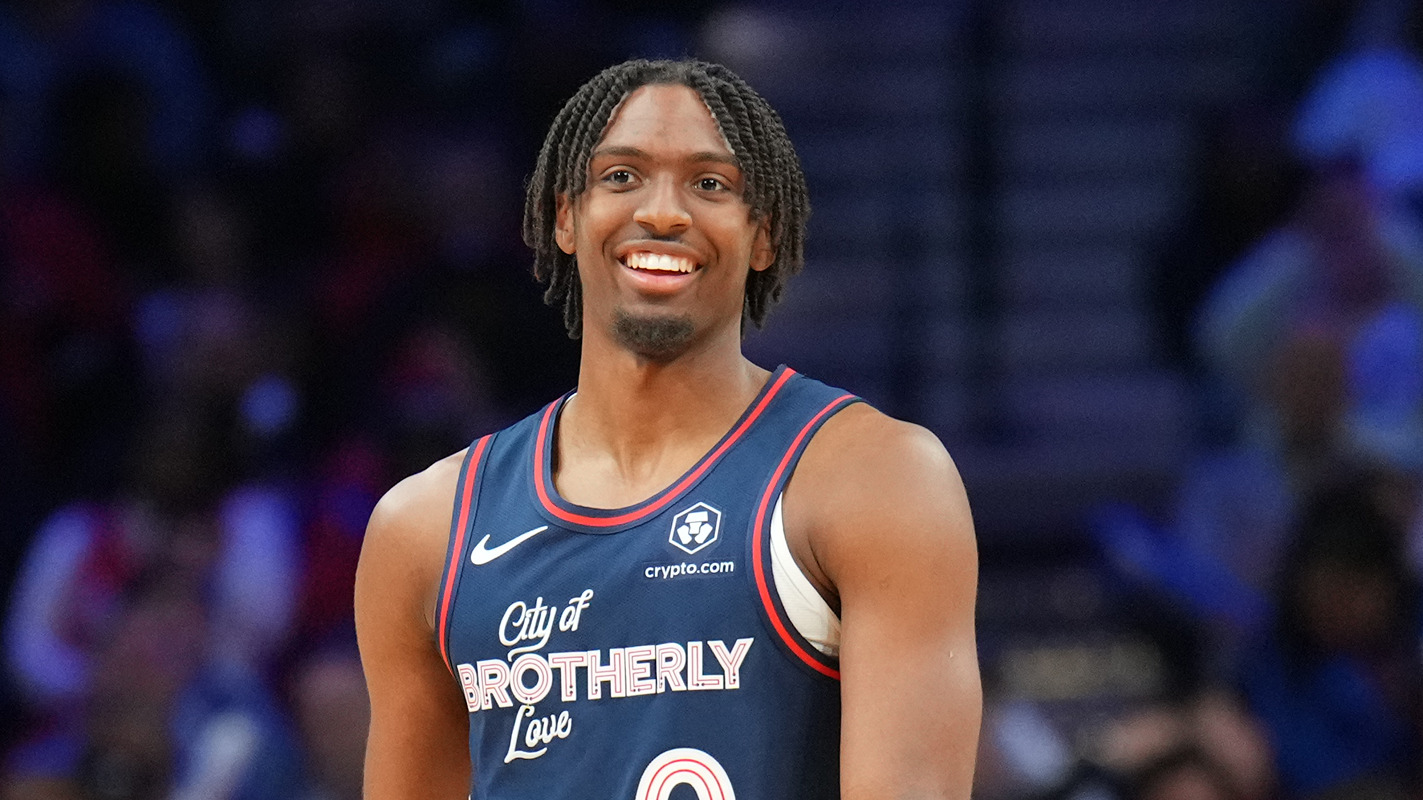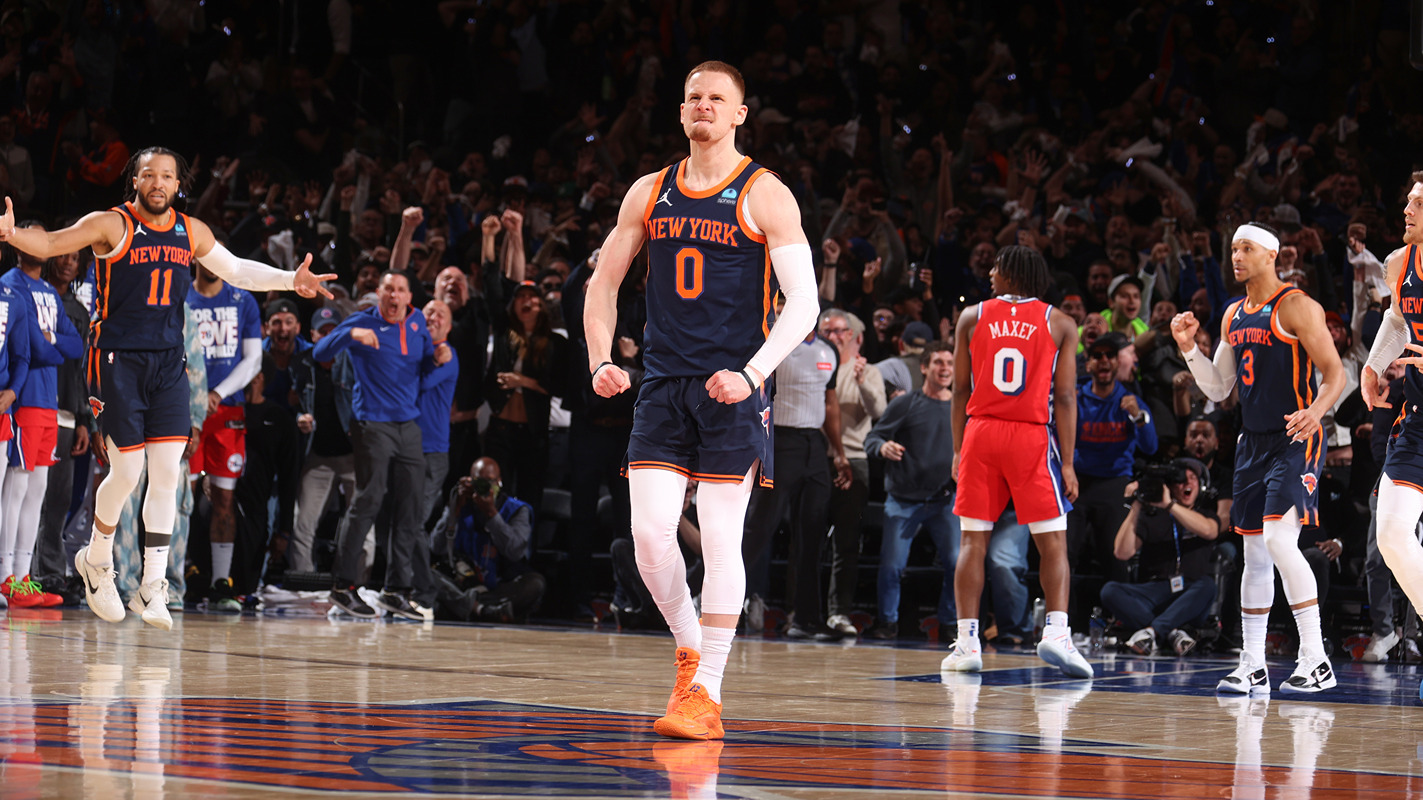Let's say you're an NBA coach after a loss. You plop down in your office chair. You're stewing. You're sweaty. Your vocal chords feel like someone gently massaged them with a cheese grater.
An intern hands you the final box score. You look down and can't wait to find out: What cost you the win?
What column do you look at first? What column should you look at first?
If you ask Gregg Popovich, it's the 3-pointers-made column. That's the only one worth looking at these days in a 3-obsessed league.
Last week, ahead of the San Antonio Spurs' game against Chicago Bulls, Popovich was asked about the 3-point shot in the NBA, a topic which has long been fertile ground for a good quote from Pop. The 69-year-old has hated the advent of the 3-point shot for years and this was not the first time he's ranted about the 3-ball.
"These days there's such an emphasis on the 3 because it's proven to be analytically correct," Popovich offered Monday with what appeared to be a sneer. "Now you look at a stat sheet after a game and the first thing you look at is the 3s. If you made 3s and the other team didn't, you win. You don't even look at the rebounds or the turnovers or how much transition (defense) was involved. You don't even care. That's how much an impact the 3 shot has and it's evidenced by how everybody plays."
Pop wasn't done.
Philadelphia 76ers
Complete coverage of the Philadelphia 76ers and their rivals in the NBA from NBC Sports Philadelphia.
"I hate it, but I always have," Popovich said even as he's adjusted over the years. "I've hated the 3 for 20 years. That's why I make a joke all the time (and say) if we're going to make it a different game, let's have a four-point play. Because if everybody likes the 3, they'll really like the 4. People will jump out of their seats if you have a five-point play. It will be great. There's no basketball anymore, there's no beauty in it. It's pretty boring. But it is what it is and you need to work with it."
(Stephen Curry chimed in on Instagram with a "Nope!")
This is a classic Pop rant. Funny. Ornery. Critical. But accurate?
He's exaggerating a bit to make a point, but on the surface, Popovich seems like he's onto something. The 3-point shot has become more and more popular in today's NBA. This season, the average NBA team shoots roughly 31 3-point attempts, about two more than last season and a whopping 13 more than the 2009-10 season. In some ways, it has taken over the sport.
But is the 3-point column really that predictive? If you're a coach and you want to see what won you the game, should your eyes dart to the 3-point column on the stat sheet first?
Well, let's actually do the work. I have researched every NBA game played this season through Sunday's games (all 342!) and looked at which stats aligned with the win column most often. In other words, which battle tended to win the war of a basketball game?
With that in mind, the most important stat on the traditional box score is ... field-goal percentage! Basketball purists, rejoice! If you shoot better from the floor than your opponent, you're probably going to win the game. In fact, teams this season are 246-69 (.781) when they win the FG% column.
OK, maybe that's a little obvious. It's a make-or-miss league, just as Jeff Van Gundy loves to say.
Now, with all the 3s in today's game, you look at the 3-pointers-made column, right?
Actually, still no. Old-school coaches might want to sit down for this: The team that won the defensive rebound battle is the next-most likely to win, going 225-71 (.760) this season. Don't believe it? Look at the league's top defensive rebound teams: Milwaukee, Philly, Portland, L.A. Clippers, -- yeah, they're really good this season!
That area of the game probably keeps Wizards coach Scott Brooks up at night. Washington is 4-1 when they win the defensive-boards column, but 6-13 when they don't.
All right, 3-pointers have to be the next most pivotal category in the box score, right? Nope. Plain ol' field goals made is still more important than the 3-ball. The team that reigned supreme in the field goals column went 225-72 (.758), regardless of where they took them.
We can keep going. Turns out that assists (.699), rebounds (.690) and 2-point field goal percentage (.689) are still more tied to the win column than 3-pointers made. We're seeing that maybe the 3-point shot isn't the be-all and end-all.
Finally, further down the list, boom, we have 3-pointers made at a .640 win percentage, just barely ahead of 2FG (.628).
Here's the W-L record of teams that "won" the stat in the box score.
Huh. So, Pop is right in some sense. The "winner" of the 3-point column is more correlated with wins than turnovers, blocks and steals. But not rebounding, especially cleaning up the defensive glass.
Even though teams are launching the deep ball more than ever, knocking down more 3s than your opponent doesn't guarantee victory. In fact, you lose 36 percent of the time with that 3-point edge. Even if you win the 3-point percentage column, you still lose 25 percent of your games, hardly a knockout punch.
You don't have to tell Mike D'Antoni twice about this phenomenon. If Pop's theory were true, the Rockets would be good this season. Newsflash: They aren't. If 3s made truly determined wins, then the Rockets would be 18-3-2 this season. They're 11-12. Earlier this season, they made 10 more 3-pointers than the Clippers and still caught an L.
How about the Bucks? The surprise team of the season, Milwaukee is 16-7 while firing up 3s at a Rockets-like rate. If the 3-point column dictated wins and losses, they'd be 14-8-1. It's only two more wins, but this shows there's more to their hot start than just the 3-ball. Their star player and offensive focal point, Giannis Antetokounmpo, is a terrible 3-point shooter, but the Bucks are amazing this season more so because they're the NBA's leader in 2FG% and layups -- and they dominate the boards. They're so dang good because they own the paint like a 90s throwback.
* * *
I asked the trusty Basketball-Reference gurus to run some numbers for me, and what they found was interesting. The team that wins the 3FGM column over the last decade has a win percentage of .648 in those games. This season, that win percentage is .640 and has been in decline as 3-point attempts have gone way up.
In fact, the 3-point column is essentially no more predictive than it was a decade ago (.638 in 2008-09). Aside from a blip in 2016-17, teams that won the 3-point column have hovered around .640 pretty consistently since 2004-05, when rule changes allowed more freedom of movement for guards (Hey, Mike D'Antoni!).
So what's Pop's rant really about?
It seems to be more about aesthetics, along with a hint of bitterness toward the fact that he's not using 3s to his advantage (NBC Sports' Dan Feldman wrote about this). Popovich doesn't seem to like the drive-and-kick flow of the game, which feels like an issue of taste rather than a contention of competition. Business in the NBA is booming and it's hard to imagine a global obsession over Steph Curry without the advent of the 3-point line.
The game isn't dominated by guys who were born super tall -- there's no Wilt Chamberlain, Kareem Abdul-Jabbar and George Mikan in today's game (not yet, Joel Embiid). Now, the NBA's best players are smaller guys -- Curry, Kemba Walker and Damian Lillard -- who have mastered the skill of making baskets from really far away and away from a web of defenders.
There's more data than ever in sports and the lessons from that data-mining has made its way onto the playing field where scoring has reached heights unseen. NFL coaches are going for it on fourth down more and throwing for more yards than ever. In Major League Baseball, strikeouts and home runs are soaring as part of the true-outcome seachange. If Pop hates 3-pointers, he'd really hate the home run ball. The team that wins the 3-point battle wins 64 percent of the time but according to the Sports Reference folks, the team that wins the homer battle wins a whopping 77 percent of the time.
In the end, it's not only good for winning, it's good for business. As Greg Maddux told Tom Glavine: Chicks dig the long ball.





